Six best practices for a wow social media customer service
You have business pages on popular social media platforms like Facebook, Twitter and Instagram. You reply to public and private messages, and you do your best to solve prospects’ and customers’ problems. What else is there to do in terms of social media customer service?
Unfortunately, it turns out that most businesses don’t even do that. Research from Sprout Social shows that brands reply to only 11% of customers, ignoring 89% of the social messages they receive. Not only that, but it takes brands an average of ten hours (!) to reply to a message they receive on social media.
With more and more customers using social media platforms to get helpful and friendly support, ignoring support messages will not only hurt your reputation but also your bottom line.
So, if there’s one thing you take from this article it’s to never ignore social messages.
Now, if you want to provide a wow social media customer service that not only gets people talking but also attracts new customers and makes existing ones come back to you again and again, read on.
1. Choose the right social media platforms for your business
You know what makes your social media efforts ineffective and time-consuming? When you try to be everywhere and quickly sign up to any shiny new platform that pops up.
Our advice? Don’t try to be everywhere. You don’t need to be on Facebook, Twitter, Instagram or Pinterest unless that’s where your customers are. Otherwise, you’ll just be wasting precious time and energy that you could very well use on other aspects of growing your business.
Here’s the thing: Facebook is popular, sure, and lots of businesses have success with it. You might even have a personal account yourself that you use quite often. But do your customers use it too? Is it one of their favourite places to spend time online?
If it’s not, then there’s no point in being active on it since you’ll have no one to deliver a great support experience to.
So find those platforms that your customers are on. Don’t know how? Here’s a useful resource for figuring out which social media platform(s) your business should be on.
2. Monitor social media mentions
Sam Walton said that “if you don’t listen to your customers, someone else will.” But how can you listen if you’re not monitoring what they’re saying online about your brand?
They might be on Twitter asking you questions, or they might be upset about something and looking to your business for a solution. In other words, they want you to notice them and they want you to react and give them the answers and solutions they need.
The first step to be there for your customers isn’t to stare at your social media feed all day and hit refresh every five minutes. But to use a tool like Social Mention, HootSuite or TweetDeck that alerts you whenever your brand gets mentioned.
Now check out these tweets from Casper’s account:
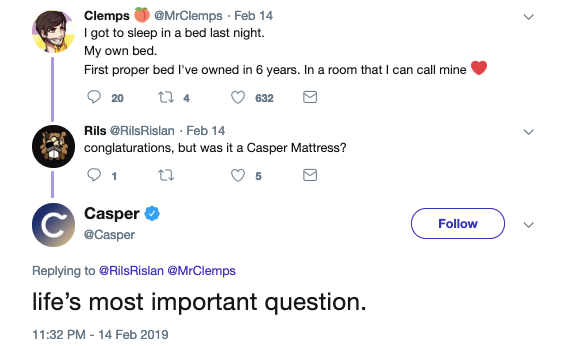
If you take a closer look at the second tweet, you’ll notice that the user didn’t tag the product or the company and they also didn’t use their Twitter handle. So how did Casper notice it?
They’re most likely using social listening tools that alerts them whenever people talk about the brand or their products even if they don’t tag the company in their posts.
You should try this tactic as well so you know when your customers need help. Even if they don’t, you can still take this opportunity to interact with them.
Read our post for more social listening tools to keep an eye on your online reputation.
3. Don’t take ten hours to reply
When it comes to social media, people want a speedy response. In a survey by The Social Habit, 32% of social media users who contact a brand expect a response within 30 minutes, and 42% expect a response within 60 minutes.
So if you receive a private message or get a notification that someone has mentioned your brand or products, don’t make them wait too long to get a reply. Make an effort to respond as quickly as you possibly can.
4. Speak your customers’ language
Before you reply to a message, whether private or public, take a moment to notice the language and the tone they’re using. Then adjust yours to match the customer’s.
So, for example, if a customer uses emoticons, GIFs or slang in their message, that’s a green light for you to reciprocate.
Here’s how Casper does it:
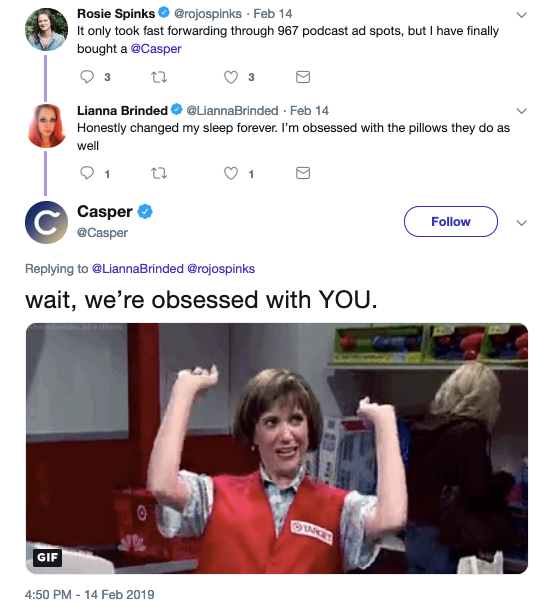
If they’re feeling angry or frustrated, acknowledge it and try to use tone that’s reassuring, understanding and apologetic. Check out this example from JetBlue:
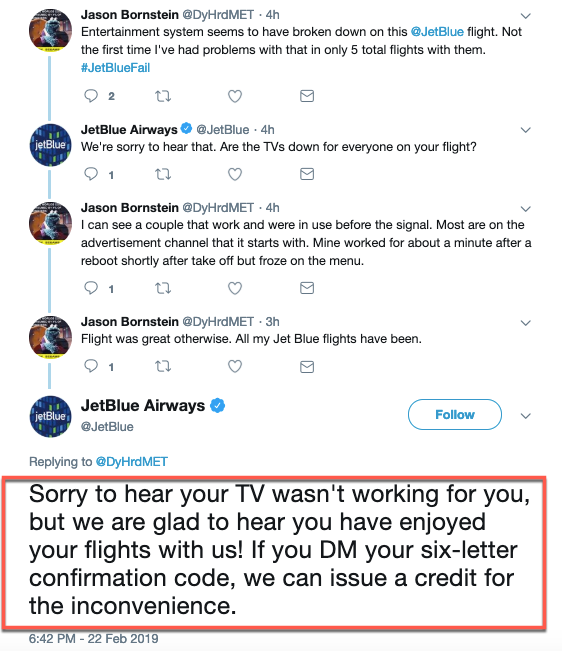
Here’s the thing: being too formal or scripting your answers is never a good tactic if you want to build a relationship with customers. People like to talk to people, not robots. And they especially like to talk to people who are friendly and speak the same language. So keep that in mind the next time you reply to a message on social media.
5. Take the conversation offline the right way
You know by now that it’s vital to listen and to respond to customers on social media. But when dealing with complaints or sensitive information, it’s best to take things offline.
But how do you do it right?
Instead of telling them to give you a call or to email you for help, which is likely to make them feel more frustrated, simply ask them to send you their information in a private message so you can quickly offer a solution.
Here’s how JetBlue does it:
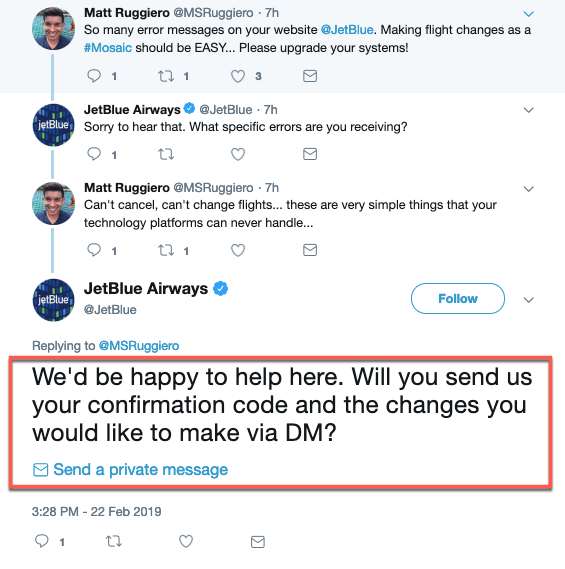
6. Create a ‘wow’ moment
No matter how amazing your products and services are, or how fun, helpful or speedy you are on social media, sometimes it’s just not enough.
If you want to provide a wow social media customer service experience, you need to surprise them by going the distance.
For example, JetBlue decided to give a customer travel credit because her TV wasn’t working properly during the flight.
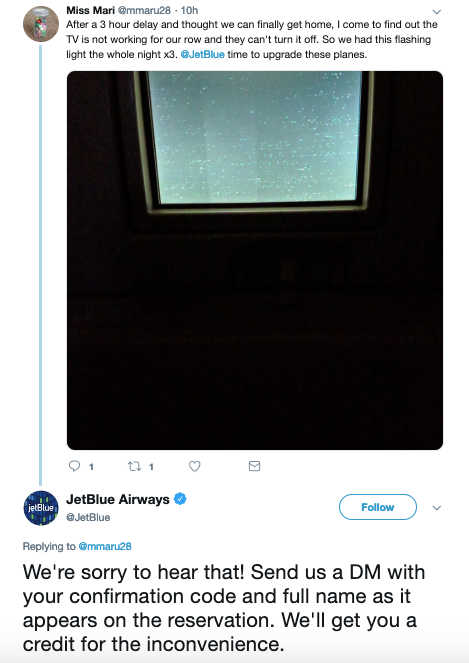
This is customer care done right.
You know what else delights customers? A good sense of humour. That’s because often enough, all you need to do is to make your customers (or other people watching) laugh.
A word of advice though: only do it if it matches your brand style and tone, otherwise it might come off as inauthentic and drive people away.
Wrapping up
There you have it – six best practices for a wow social media customer service. We hope that these tips and examples will inspire you to look differently at social media customer care and the impact it can have on your reputation and bottom line.
